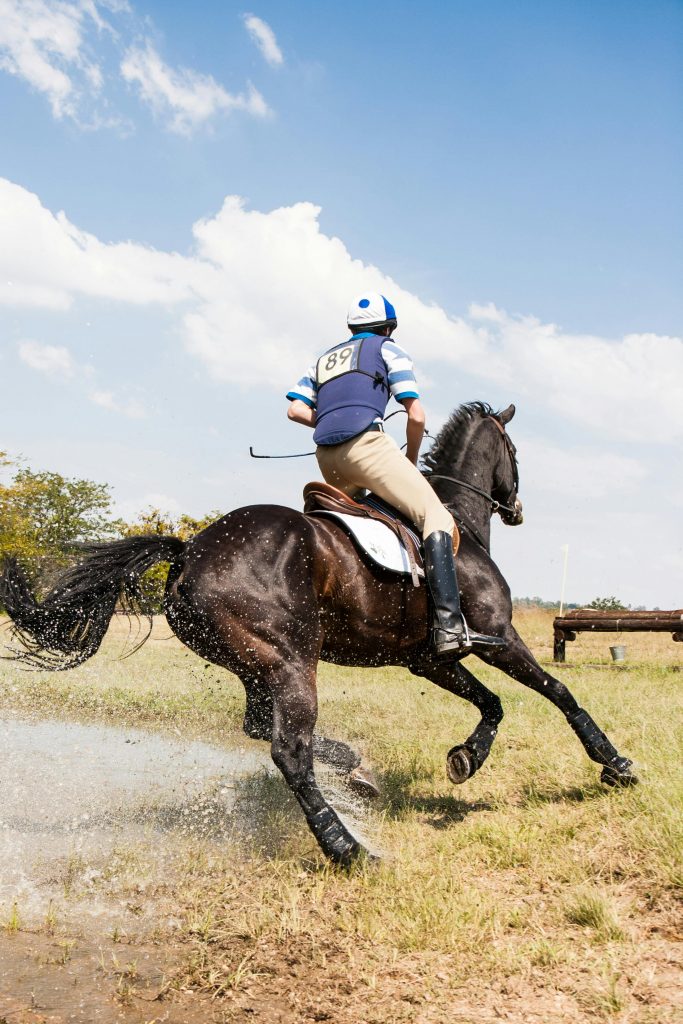Technology plays a huge role in the modern world and shapes how we all live, work and play. It’s also something that has started to become more integrated into the most popular sports globally which include tech innovations in horse racing. Football is a very good example of this, and VAR, goal-line monitoring sensors and wearable data collection tech for players are transforming the game.
Constant tech innovation is also something that can be observed in horse racing. A good illustration of this is how popular online sportsbooks are with punters for betting on the iconic Grand National race. When you also consider how many people will bet on the 2024 edition of this race via their smartphone, it is easy to understand how technology continues to impact this sport.
Another technological development that is helping horse racing evolve in a positive way is wearable biometrics. These devices enable the industry to enhance the safety of the sport and help it remain relevant in our tech-centric world.
But how is horse racing harnessing the power of wearable biometrics?

Wearable biometrics for horses
The huge impact of wearable tech on modern life is hard to underplay and is certainly making waves in horse racing. A good place to start is how wearable biometrics can be applied to horses themselves. This is done with two main aspects in mind – to collect useful data on how a horse performs when training or racing, and also to protect horses at events like the Grand National, Ascot and Cheltenham.
But how does this work in practice? To begin with, wearable biometric sensors are placed on the horse and these then track the horse in races and training. The data collected by the sensors is fed back digitally to a paired app or online platform and can give accurate information on a variety of key metrics.
These include heart rate, stride length, gait and overall fitness. By analysing the data collected, trainers, owners and jockeys are able to pinpoint areas for improvement in terms of the horse’s overall performance. It can also allow them to track any physiological changes to a horse over time, such as weight loss. This allows trainers to tweak training regimens and diets as required, and helps jockeys focus on the right areas to work when riding the horse.
The information that biometrics collect can also prove useful come race day. For example, a jockey who knows their horse has a decent stride length is more confident of holding his ride back a little to conserve energy, and then use his horse’s superior stride length to make up ground in the final stages of a race.
Horse safety and wearable biometrics
The latest gadgets (such as the newest smartphones or Samsung’s bespoke jet vacuum cleaner play a big part in most people’s lives – and this is also true for wearable technology in horse racing. The sport has always focused on the safety of horses but this issue has become especially prominent recently. Wearable biometrics are of great assistance in this regard and enable valuable data to be collected on a horse’s health to facilitate better decisions by trainers and officials.
Data collected in training, for example, may show a potential issue with a horse’s heart and lead to the horse being pulled out of any races it had scheduled, while the problem is resolved. Without the early warning provided by wearable biometrics, this issue might not be spotted and the horse may run the races as planned – with disastrous consequences.
Wearable sensor technology also enables trainers to spot problems that usually come as a result of overtraining, so they can reduce the training frequency as needed. These examples show how wearable sensors allow those within racing to track, monitor and better protect the safety of horses.
What specific wearable biometric tech is used in horse racing?
While the above sets out the benefits of this kind of tech and how it is most commonly used in horse racing, looking at specific examples of it in action is worthwhile:
· Polar Equine heart rate monitor – a wearable heart rate sensor that feeds back real-time heart rate data to trainers or owners.
· Nightwatch – awearable biometric device that tracks a horse’s vital signs (such as temperature and respiratory rate) and provides alerts if a horse is in distress.
· E-Trakka – a wearable monitor that provides real-time updates to the cloud about a horse’s heart rate, sectional times and stride length.
· Hylofit – awearable monitoring device that tracks a horse’s overall fitness levels.
Wearable biometrics in horse racing: harnessing the power of tech
As with most other sports and society in general, horse racing is taking steps to harness the power of tech. While this can be seen in online sportsbooks, GoPro’s on jockey’s helmets and tech that helps to resolve close finishes on the line, wearable biometrics is perhaps the best example of tech to focus on.



